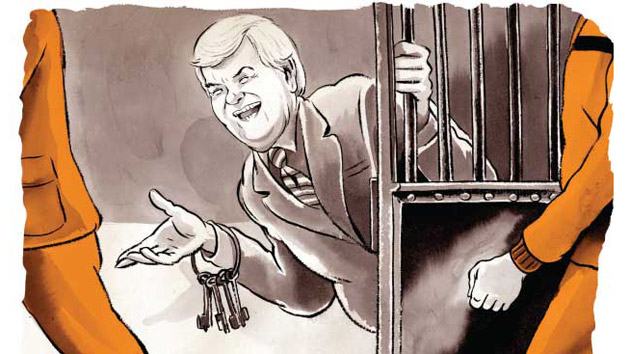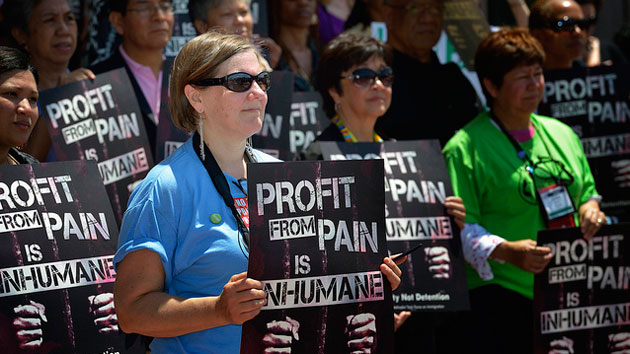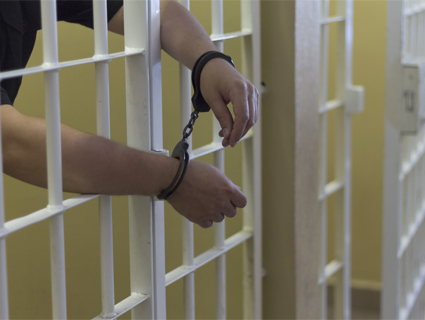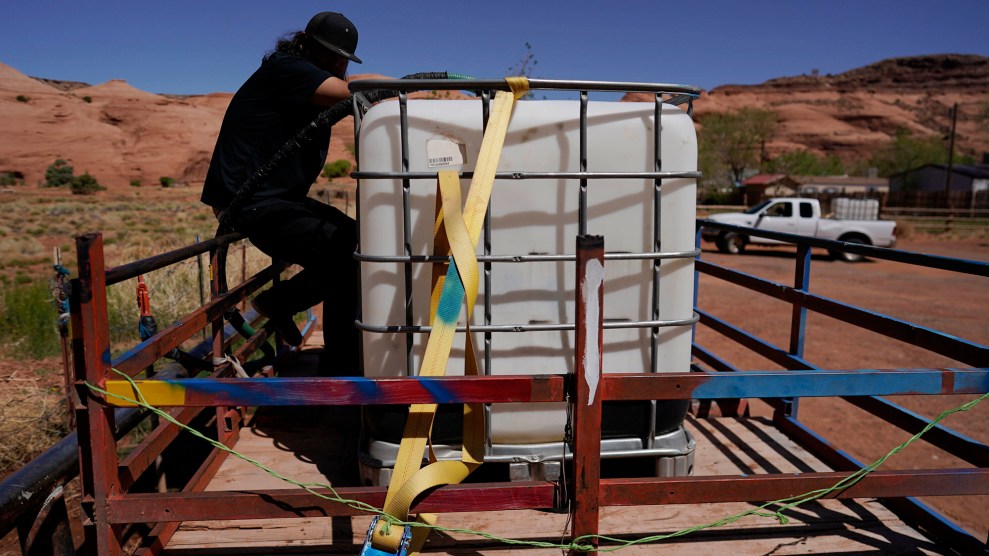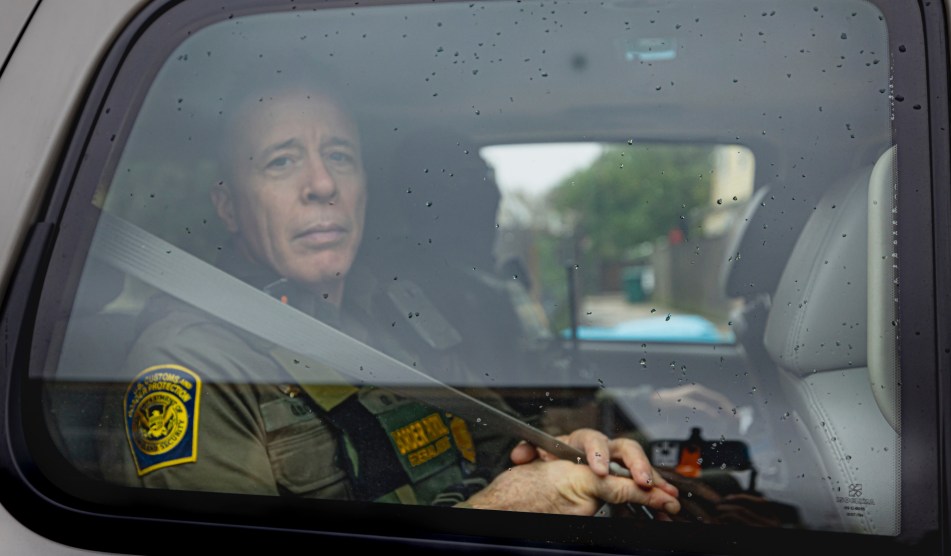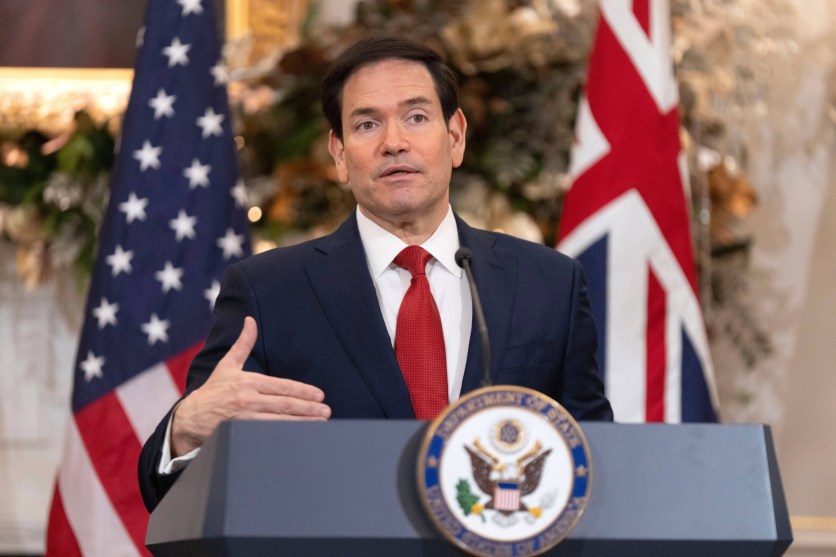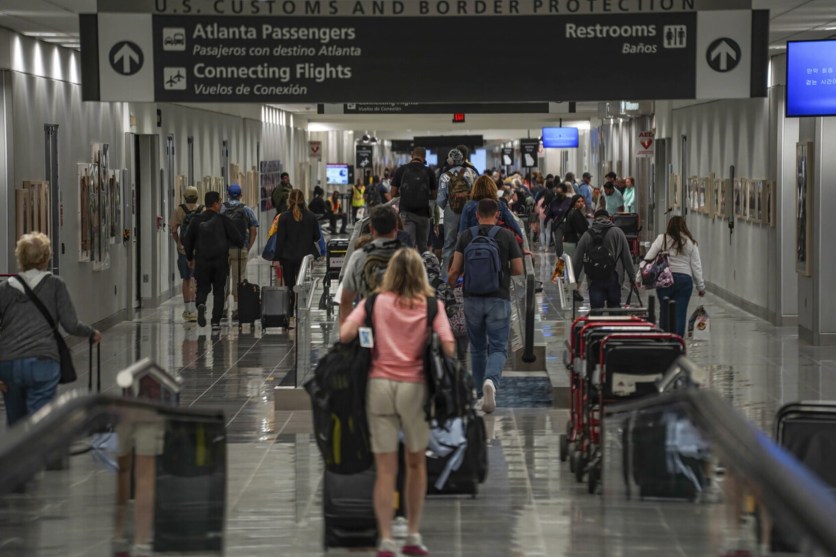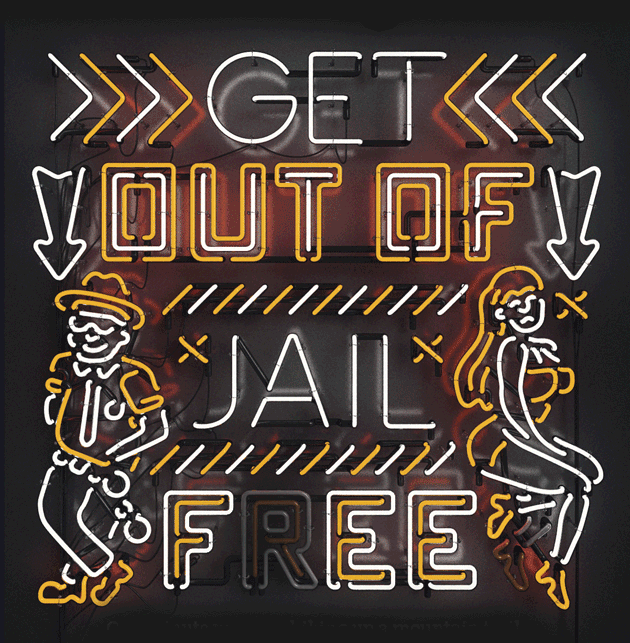
The largest annual gathering of bail bondsmen in the country—the convention of the Professional Bail Agents of the United States, or PBUS—was slotted between Dunkin’ Donuts and Elk Camp 2013 at the Mirage Resort and Casino, a tall, shiny structure shaped like an open book and set against replicas of the Colosseum and Eiffel Tower on Las Vegas’ Strip. The sidewalk out front was littered with cards bearing phone numbers and pictures of naked women. In the courtyard, flames licked the late-winter air to the rhythm of a tribal drum every hour, on the hour. A sign at the entrance announced that the casino’s dolphin just had a baby and we would be able to see it soon. As I walked through the smoky slots area I saw a man with a PBUS lanyard doing an extremely forced I’m-having-fun dance with his assistant while a casino employee showed them how to play the one-armed bandit. It was a bit of a letdown from what I’d been anticipating—all-night blackjack sessions with bondsmen and bounty hunters telling tales from the street over stiff drinks. I’d even grown a mustache for the event, thinking it would help me blend in a little—bondsmen have mustaches, don’t they?
Not really, I discovered when I arrived at the welcome reception. “So how do you like the industry?” I asked a clean-shaven man in a shiny gray suit who looked to be about 30. “I like it,” he said buoyantly, taking a sip of his beer. “Sometimes you get real lucky.” He told me about the first bond he ever wrote in the cheerful, blow-by-blow manner of a poker player recounting a winning hand. A college student went out drinking and crashed his car into a fence, he explained. “So him and a girlfriend both get kinda messed up.” He beamed. I was confused—was I to realize that this was a boon? He quickly explained that normally, bail for a DUI was $5,000, but since it involved an injury, the amount automatically jumped to $100,000. When he told the driver’s mom she would have to pay him a $10,000 fee to get her son out of jail, she said, “No problem. Here’s my credit card number.” He smiled and took a sip from his beer, nodding happily. “I couldn’t believe it.”
The business model is pretty straightforward. Say you get arrested for drug possession and wind up in jail. Shortly afterward you appear before a judge who decides whether to let you out before your trial (only people charged with the most heinous crimes are denied bail altogether) and, if so, what collateral it will take to make sure you don’t bolt. For drug possession, let’s say the judge sets bail at $30,000. If you have that kind of money, you can give it to the court and get it back when you show up for trial. If you fail to appear, you lose it. If you don’t have that much cash, you have two choices: sit in jail and wait for your trial, or hire a bail bondsman. To the bondsman you pay a nonrefundable fee—usually 10 percent of the bail—and he promises the court that you will show up for trial. If you don’t, he will owe the court $30,000.
The man in the gray suit continued: “I write real A+ stuff,” he said. “You make the most money off domestic violence, cuz the bail’s high. Domestic violence is $50,000. You figure that’s at least $5,000” in the bank. “And a lot of times those cases don’t even get filed—” His eyes drifted toward the middle distance behind me. I turned around to see Dog the Bounty Hunter entering the room, cameras swirling around him. His blond mullet flowed down the shoulders of his flame-embroidered leather jacket. His sunglasses sat on top of his pink forehead. People edged in for handshakes and pictures. They all knew his A&E reality show, in which he kicked in doors and pepper-sprayed fugitives for bail bondsmen around the country. Dog, like many bounty hunters, was a freelance contractor, hired by bondsmen to track down clients who skipped court. He was a private policeman of sorts, empowered by the state to bust into the houses of people out on bond, make arrests, and detain people—things bounty hunters get to do with minimal, if any, training and regulation.
Dog’s show was suspended for a few months in 2007 after his son sold the National Enquirer a recorded phone conversation in which Dog said he couldn’t work for him unless he broke up with his black girlfriend. It wasn’t because she was black, Dog said, but “because we use the word ‘nigger’ sometimes here. I’m not gonna take a chance ever in life of losing everything I’ve worked for for 30 years because some fucking nigger heard us say ‘nigger’ and turned us in to the Enquirer magazine.” Dog was the star guest of the convention.
Hundreds of bondsmen were here to learn the tricks of the trade. In one workshop, the president of the association gave an impassioned speech about the IRS—”Don’t even think about talking to those folks. They are not your friend.” In another, a private investigator schooled us in the art of catching skips. For starters, he said, all bail agents should require clients’ Facebook and email passwords. Another tip was to maintain fake Facebook pages and friend clients to keep track of them. The instructor has 11 faux personas. (Stuck in traffic? “Update the page where you are a 14-year-old girl.” Waiting for a meeting? “Update the one where you are a 97-year-old guy.”) If your client has an iPhone, a.k.a. “snitch in your pocket,” require her Apple ID so you can trace her anywhere. And don’t forget about Google—you can subpoena them for your clients’ records.
He taught us about companies that drive around scanning license plates. They market themselves to repo companies,but if a bondsman is looking for someone, he can give them a license number and they’ll tell him where the car has been and when, for $7 a hit. He also said we should all think about getting drones. “I use a drone in my business…I can control it from my iPad. Guy’s got a big, long driveway and a barking dog? No problem.” He made a little buzzing sound as his hand mimicked a drone zipping up the driveway and taking pictures of license plates. “I keep this thing in the trunk of my car.”
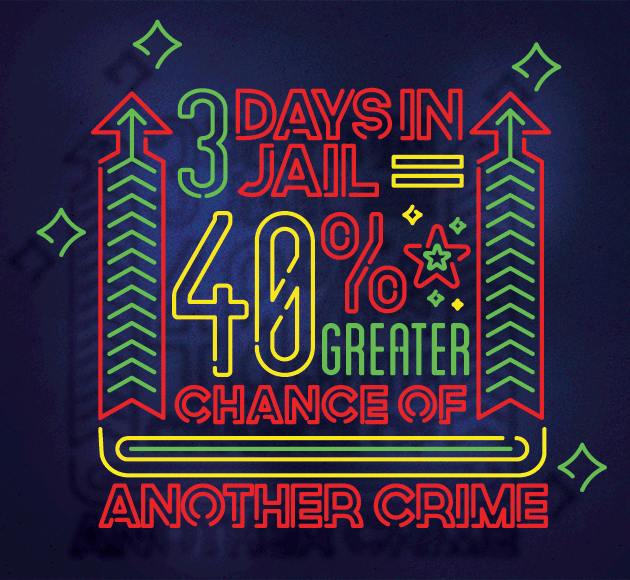
It wasn’t hard for Edmund Langevin III to become a bondsman. All it took was five days of classes and $400; that, plus a $150 firearms class, gave him the power to make arrests and use a gun on the job. Bennie Roughton saw that power in action in October 2012, when Langevin showed up at his house in Chesapeake, Virginia. He was looking for a man named Jason Turner who lived across the street. Had he seen him? Roughton hadn’t; he was friendly enough with Turner but didn’t know him well and thought him “a little weird.”
Langevin had bailed Turner out after he and his wife stole a washing machine from a former landlady they had a gripe with. It was the kind of thing that had left Turner with a long rap sheet of petty crimes. As a condition of bail in the washing machine case, Turner had to meet regularly with his parole officer. He hadn’t shown up for the most recent one, so Langevin went to look for him.
Later that day, Roughton was out walking his dog when he saw Langevin jump out of his vehicle with his gun drawn, running toward three guys sitting in a car in the driveway of Turner’s house. “He never announced himself, he didn’t say who he was,” Roughton said. (In a police statement later on, Langevin said that he did.) The men jumped out and ran. “If you were with me and you see a guy running at you with a gun out,” Turner would later ask, “are you gonna run? I’m scared of my life.” Roughton saw Turner’s hands go up, as though in surrender, then the gun went off—”Pow!” He heard Turner shout, “Motherfucker, you shot me!”
“I wished I’d had my camera and videoed it,” Roughton said. “It was something off of Dog the Bounty Hunter, except stupid. Dog woulda never done that.”
Turner was unarmed, but Langevin shot him in the stomach. Langevin would later tell police Turner had grabbed for his gun, but in his police statement Roughton said that was not what he saw. Turner denied it too. “This is a kill shot,” Turner said when I met him, pointing to the scar across his stomach. “He didn’t shoot me in the knee, he shot me in the fucking stomach…When you shoot a deer, you shoot him in the stomach and he walks into the woods and dies and you go get him.” The bondsman kept Turner pinned to the ground until the police showed up and disarmed him. Turner went to the hospital, then to jail for missing his parole meeting. Langevin went home.
There has long been a vigilante quality to the bail system—the business itself is a creature of the Wild West. Before that, bondsmen didn’t exist. In Anglo-Saxon times, when much of our legal system was born, crimes were private affairs and suits were brought not by the state, but by one party against the other, with the wronged party typically seeking monetary compensation. Even murder cases could be settled by a fine paid to the victim’s family. In the rare case when an offender was thought to be a danger to society—usually because he was a recidivist—he was mutilated or executed. Imprisonment was considered costly and troublesome, and people were generally detained only up to the point that a family member or friend provided a pledge guaranteeing that the accused would appear in court. If the accused fled, the guarantor would pay the accuser, and the matter would be settled.
As centuries passed, crimes increasingly became the concern of the state and bail grew more complex—nowhere more so than in frontier America. The absence of close friends and extended family made it difficult to find people willing to put up bail money, especially in amounts high enough to discourage the accused from fleeing.
Out of this quandary emerged a new industry, born in the rough-and-tumble San Francisco of the late 19th century. Two brothers, Peter and Thomas McDonough, began putting up bail money as a favor to lawyers who drank at their father’s saloon, where they worked as bartenders. Once the lawyers’ clients showed up for court, the brothers got their money back.
The McDonoughs had an idea: Why not charge a fee for their service? The scheme was so successful that when their father died, they ripped out the bar and dealt solely in bail bonds. The establishment, named McDonough Bros., turned them into millionaires. The company quickly earned the moniker “Old Lady of Kearny Street” and was “without a doubt the most notorious business house in San Francisco,” according to a 1941 Time article. The Old Lady “furnished bail by the gross to bookmakers and prostitutes, kept a taxi waiting at the door to whisk them out of jail and back to work.” The article quoted a 1937 report on police misconduct that referred to the Old Lady as a “fountainhead of corruption, willing to interest itself in almost any matter designed to defeat or circumvent the law.”
By the 1940s, bail bonds nationwide were high enough that many defendants had no choice but to either pay a bondsman or sit in jail until trial. What had started as a specialty business was now an integral part of the criminal-justice system.
In 1960, a seed of doubt was sown. A businessman and a journalist visited a jail in Manhattan and became convinced that far too many people were being locked up before trial because they couldn’t afford bail. The two, Louis Schweitzer and Herbert Sturz, organized a small staff, called themselves the Vera Institute, and conducted an experiment. They interviewed thousands of defendants, asking them about past criminal records, local family ties, and employment history, assessing which defendants could be trusted to return to court without a bail bond. They provided their recommendations to judges. By the third year, their Manhattan Bail Project reported that less than 2 percent of the pretrial detainees released without bail on its recommendation were failing to appear for trial. Similar projects began to emerge in major cities across the country.
In the decade that followed, Congress passed the Bail Reform Act, restricting commercial bail in federal courts and establishing release on recognizance (i.e., for free) as the preferred form of pretrial release. Four states—Illinois, Kentucky, Oregon, and Wisconsin—followed suit. Pretrial release programs modeled on Vera also proliferated, allowing judges to release low-risk defendants. The bail bond business seemed headed for near-extinction. But soon its fortunes would reverse.
“Ed, why did you shoot me?” Turner asked Langevin as he bled through his stomach. “I thought the guy liked me,” he told me later. “This man knows my family. He knows my heart.”

Turner had met Langevin when he was his sister’s bondsman a few months earlier. When Joy Turner landed in jail for a traffic offense, several inmates told her Langevin could get her out, no money down, no need for a cosigner; “just stay with him and whatever he, you know, wants, whatever it leads to, to do.” She called him up. “I told him straight up, I said, ‘Look, I don’t have no money to give you right now, but I can promise you I’ll give you an extra $50.’ I bribed him, basically.” After she got out, she and Langevin started to date. His life was exciting for Virginia Beach. He didn’t hire bounty hunters. He did it all himself—cussing people out over the phone, chasing down skips who didn’t show up for court. Joy started riding along with him when he’d go find people. “He thinks his shit don’t stink basically—he’s higher than the law.”
Joy was a drug addict then. Langevin misused his Adderall prescription and gave some to Joy, she said. Other women he bailed out had to pay for it, she recalled. There was that one client of his who would come over to buy it, the one Joy walked in on when he had his hand up her shirt. “She was using him to get his Adderall,” she said.
When her brother needed to post bail for taking the washing machine, Joy referred him to Langevin. He seemed to like her family. He even drove her mom to the hospital once. But Joy didn’t like how he kept messing around with other women he bailed out. He was “turning into some of them other bondsmen that do the same damn thing, down there at the oceanfront. They have sex to get you out and all that other crap.”
Eventually Joy grew afraid to go for walks in her neighborhood lest she run into Langevin. “When it comes to him, I get freaked out,” she told me. First he “went psycho and went hunting for my brother.” She heard about another young woman he’d taken up with after she broke up with him, another one who couldn’t afford to pay the bond fee. Her name was Sophia.
The past two decades have been good to the bail business—very good. Of the nearly 750,000 people in America’s jails at any given time, two-thirds are awaiting trial. Of accused felons held until case disposition, 89 percent are there because they can’t afford bail. The American Bar Association, the National Association of Counties, the International Association of Chiefs of Police, the National District Attorneys Association, and others have condemned commercial bail as a system that discriminates against the poor and places Americans’ liberty at the mercy of private businesses. In 2011, Attorney General Eric Holder said commercial bail was a major obstacle to reducing inflated prison populations. All other factors being equal, defendants detained pretrial are three times more likely to be sentenced to prison than someone charged with the same crime who was released before trial. One reason for such disparities is that it’s hard to mount a robust defense from behind bars, says Tim Murray, director of the Pretrial Justice Institute. People eager to get out of jail are “more prone to take plea offers,” he says.
There is no national data on the cost of holding people pending trial, but what numbers do exist suggest the total is staggering. An Oregon county estimates the cost per inmate at $234 per day. In New York, it’s $460 per day. Even if the national average were as low as $50 per day, the annual cost of pretrial detention would reach $8 billion.
“We don’t have a system currently that does a decent job of separating who is dangerous and who isn’t,” Murray says. “We only have a system that separates those who have cash and those who don’t.” The median time people charged with a felony stay in jail before their case is settled is 45 days, but some are held for much longer. In Los Angeles County, some defendants who couldn’t afford bail have been in jail, waiting for a trial, for close to six years. In Houston, some have been held for eight.
Even a few weeks in jail can wreak havoc on the lives of the accused. Seventy-one percent of jail inmates had jobs when they were arrested, according to the Bureau of Justice Statistics. Losing those jobs because they can’t post bail leaves their families at risk. Studies also show that people become more likely to reoffend the longer they are detained pretrial: With just two to three days of detention, low-risk defendants are almost 40 percent more likely to commit new crimes before trial than equivalent defendants held less than 24 hours. Low-risk defendants held 8 to 14 days are 51 percent more likely to recidivate within two years than equivalent defendants held one day or less. “That recidivism has a toxic effect,” Murray says, “not only with regard to the individual, but to the community that will ultimately be the victim.”
At the convention in Vegas, any talk of victims was about beleaguered bail professionals. “There are people out there who are dead set on getting rid of you,” announced a slick, gray-haired man with a slow Texas drawl at the convention’s opening session, as some 200 people—some in suits, others with leather jackets and tattooed necks—listened in silence.
The speaker—Jerry Watson, the chief legal officer for Newark-based Allegheny International Association Bail Bond Surety—was referring to pretrial service programs modeled on the Manhattan Bail Project that serve roughly 10 percent of US counties. These programs gather evidence about each defendant and come up with a “risk score” to help judges determine whether they need to set bail. Those considered a low risk—as many as two-thirds—are typically released on recognizance. Many of the agencies monitor low-level defendants after they are released, helping to ensure they abide by any conditions set by the court. Eight months after New Orleans started a pretrial services program last year, its felony pretrial population dropped 22.5 percent, saving the city more than $2 million a year.
Needless to say, Watson told me, these programs are bad for the industry’s bottom line. “If [pretrial services] got 1,000 people out of jail last year, those people would have otherwise gotten out on a bail bond,” he said.
In a class I took the next day, we got some concrete advice on how to fight back. The speaker, Mike Whitlock, encouraged us to become “politically connected…backing this sheriff or that judge and contribute to the legislator in your district.” If your state didn’t allow corporate contributions, he counseled, you might want to write checks in your own name and have your company reimburse you. He didn’t mention that, in many states, this would be a violation of election law.
Contrary to what I’d assumed, Whitlock was not a bondsman. Neither was Watson or any of the other speakers I’d heard using words like “enemy” and “war” when discussing pretrial reform. They were executives of insurance companies—surety companies, more specifically.
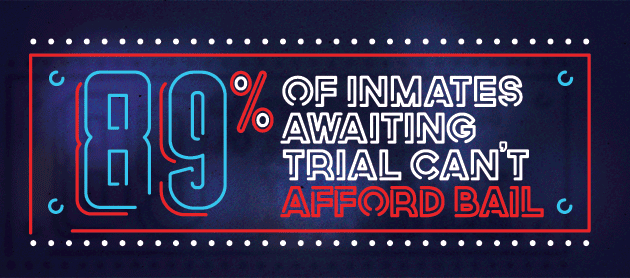
There are many kinds of surety companies—bail is just one type—and their function is essentially to guarantee contracts between two parties. If you hire a “licensed and bonded” construction company to remodel your kitchen and it doesn’t finish the job, the surety will make you whole. With bail, the surety company guarantees the agreement between the bondsman and the state—if a defendant skips court and the bondsman neglects to pay the bail amount, the state can go to the surety company to get what it is owed. In most states, bondsmen can’t legally write bail unless they have a contract with a national surety corporation. In exchange for such a contract, the surety charges the bondsman 10 percent on each fee. So for every $1,000 bond, the bondsman gets $100 and gives $10 to the surety.
There are at least 32 surety companies that underwrite bail. When I reviewed their financial records, I found that they collectively underwrote more than $13.5 billion worth of bail bonds in 2012. Sixty percent of these bonds are controlled by members of the American Bail Coalition, a trade group to which Whitlock and Watson belong. According to an old ABC newsletter, the organization was formed when a handful of surety executives gathered in Florida in 1992. “They were worried,” the newsletter read. There was a “jihad against commercial bail…Government pretrial service agencies had made deep inroads into the corporate surety market.” Up to that point, the use of commercial bail had been steadily declining. The sureties committed to reversing the trend.
For starters, the new coalition sent letters to every single county that had a pretrial service agency. They cited data from the Bureau of Justice Statistics to claim that people released on a commercial bail bond were more likely to appear in court than those released into pretrial services programs. (The bureau said its data didn’t support that claim.) ABC also contacted sheriffs, courts, chief judges, chambers of commerce, and rotary clubs. “It kicked [pretrial services’] butt,” Watson told me. “Some of those counties began to cut back on the funding to pretrial service agencies. We began to turn the tide.”
Indeed. Before ABC began lobbying, in 1990, commercial bail accounted for just 23 percent of pretrial releases, while release on recognizance accounted for 40 percent. Today, only 23 percent of those let go before trial are released on recognizance, while 49 percent must purchase commercial bail. Since 1990, average bail amounts have almost tripled for felony cases. Between 2004 and 2012, revenues of the ABC companies whose income comes almost entirely from bail increased 21 percent.
ABC wasn’t the only group fighting to resuscitate commercial bail. In Orleans, I visited the office of Graymond Martin, formerly a lobbyist for bail sureties operating in Louisiana. Now, he was Orleans Parish’s first assistant district attorney. He told me about the “scheme” he’d concocted to protect the industry in the early 1990s, when there was talk in the state of eliminating commercial bail. In 1993, he successfully lobbied for a law that required defendants to pay an extra 2 percent on top of their 10 percent fee to the bondsman. That money would be divided up among the sheriff’s department, the district attorney, the public defender, and the judges. “What that did,” he said proudly, “is it gave every criminal-justice player a financial interest in commercial surety.” The next time someone suggested limiting commercial bail, “then you have every judge, every DA, every sheriff, every public defender’s office saying, ‘Wait a minute, you’re taking money out of my pocket,'” he said. “The bail lobby is very powerful both locally and nationally. [Bondsmen] go to their legislators and seek provisions which are advantageous to their business model.”
It’s easy to see why: Bail surety is unique in the insurance business in that it has virtually no losses. Watson’s company, AIA Bail Bond Surety, underwrites nearly $700 million worth of bail a year. It has existed for 107 years. “You know how many checks has this company written to pay a bail loss?” Watson asked me. “Not a single one.” In other forms of insurance, the agent’s job is merely to sell policies. When you get into an accident, the company deals with it, not the agent. But with bail, it’s the agent—the bondsman—who has to pay up when a defendant fails to appear in court. The only time a surety would have to pay would be if the bondsman went out of business—and to cover those losses, bondsmen have to contribute to a special “buildup fund.”
Property and auto insurance companies typically pay out 40 to 60 percent of their revenue in losses. When I reviewed the financial records of 32 surety companies, I found that, in 2012, they cumulatively paid less than 1 percent in bail losses.
Sophia’s life hadn’t been going well. She was 19 and had just had a baby. She and her boyfriend got into fights, which sometimes turned violent. One day, she took her son and moved in with a friend. Shortly afterward, her boyfriend came to take the baby for a visit. He didn’t bring him back. A legal battle ensued, and he won. Sophia drank too much, according to her mom, and after losing custody of her child, she drank even more. She would sometimes fly into rages. At her mom’s house over Christmas, she kept calling her ex-boyfriend. “Why can’t I see the baby?” she shouted into the phone. When her mom tried to calm her, Sophia hit her.
Not long after that, Sophia was picked up by the police, who found her walking down the street drunk. She wanted her mom to bail her out, but her mom was tired of this pattern.
“Not this time,” she told Sophia. She just wanted her to stay in jail for a night. Sophia needed to learn a lesson.
Sophia didn’t know what to do. Her bail was set at $3,500. She didn’t have the $350 to pay a bondsman. That’s when she thought of Langevin. He was her bondsman the last time she got in trouble. He’d friended her on Facebook. She called him up, and he agreed to bail her out even though she couldn’t pay his fee. Normally, he’d require a cosigner, who’d promise to pay the bail if Sophia skipped court. But he’d waive that requirement too. He just needed to know where she was. “He said, ‘Come stay on my couch,'” she said.
A couple of weeks later, Sophia called her mom. She wanted to leave Langevin’s place. She said he kept asking her to have sex with him. She didn’t like it, but he told her she owed him money and she couldn’t leave until it was paid. She said he threatened to send her back to jail. Her mom started making payments on the $350 she owed. Meanwhile, Langevin offered Sophia Adderall and drinks and she became pregnant.
She got an abortion. Later, she said, she told Langevin she wanted a new bondsman. She felt “dirty.” “He’s basically like, ‘You better not try to get me in trouble because…I can take you back [to jail] whenever I want to,'” she said. “‘All I have to do is slap handcuffs on you.'” She gathered up her things and left in the middle of the night.
The potential for abuse is a major reason why commercial bail never caught on worldwide. The only other country that allows someone to make a profit off bail is the Philippines. In Canada, selling bail bonds can earn you two years in prison on a charge equivalent to bribing a juror. In Australia, a government commission rejected the idea of introducing commercial bail in part because “it lends itself to abuses such as collusive ties between bondsmen and organized crime or police, lawyers, and court officials.”
Those kinds of abuses periodically gain public attention in the United States. For example, two judges and the biggest bondsman of Jefferson Parish, Louisiana, went to prison after the FBI discovered the bondsman was bribing judges with bottles of Absolut vodka, envelopes of cash, and lap dancers. A case has been dragging on in Kansas against a bondsman, Dwight Jurgens, who is accused of attempting to coerce at least four women into sex in lieu of bail. Bondsmen I’ve talked to condemn such acts, but argue that even so, there is no better way to prevent a defendant from fleeing than putting a third party on the hook financially.
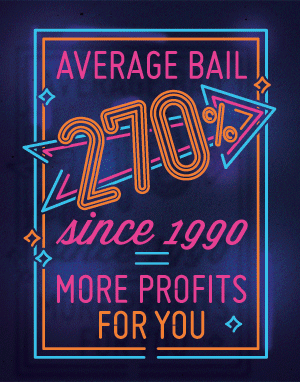
Evidence suggests otherwise. In Washington, DC, where there have been no bail bondsmen since 1992, more than 80 percent of defendants are released before trial. Only 12 percent fail to appear for at least one court hearing; in Dallas, one of the most pro-bail counties in the nation, 26 percent fail to show up. In Kentucky, where for-profit bail has been banned for 38 years, 74 percent of defendants are released before trial. Only 6 percent of felony defendants fail to appear for court. Likewise, 10 percent of felony defendants are rearrested in Kentucky while on pretrial release. By contrast, 18 percent of defendants released on commercial bail nationwide don’t show up, according to a 2007 study.
“Criminal-justice policy happens to be a field with one of the greatest disconnects between what we know and what we do,” said Michael Jacobson, former director of the Vera Institute. “It’s a research-driven field like medicine, but we also have toxic politics to deal with…If you were just basing policy off research, there would be no consideration of money bail.”
The man who has done more than anyone else to expand commercial bail is ABC’s executive director emeritus, Dennis Bartlett. A droopy-faced man in his 70s, Bartlett can be alternately churlish and kind. Over a six-month period, I saw him speak in Vegas, shared Buffalo wings with him in Virginia, and spoke to him several times on the telephone. He fancies himself a philosopher. When writing about the politics of bail, he likes to reference Kant. He uses phrases like libido dominandi when describing pretrial reformers, and he likens their literature to Mao’s Little Red Book.
Bartlett and the lobbyists he hired were recently active in Oregon, a state that banned bail bondsmen in 1978. They came close to relegalizing them last year after, an ABC executive told me, the association spent $250,000 to promote the idea. That same year, ABC succeeded in slipping a provision into a Wisconsin budget bill that would have brought back bondsmen and bounty hunters, now banned in the state. (Under pressure from Wisconsin judges, prosecutors, and sheriffs, Gov. Scott Walker issued a last-minute line-item veto.)
Before joining ABC, Bartlett worked for the CIA and Interpol, as well as the American Legislative Exchange Council, the conservative organization that brings corporations and state legislators together to create model legislation. ALEC’s private-sector members, who pay dues of $7,000 to $25,000 a year, get to help write bills that benefit their industries. Legislators pay $50 a year, which covers all-expenses-paid trips for them and their families to ALEC functions.
Next to Walmart and Bank of America, the bail industry was a small fish in ALEC, but ABC quickly climbed into leadership positions. ABC has written at least 11 ALEC “model bills” regarding bail; the most recent would vastly expand the business of bondsmen and bounty hunters by allowing courts to require a bond as a condition for early release from prison. Measures in this vein—which essentially turn bondsmen into private parole officers—have passed in Michigan, Mississippi, and South Dakota. In South Dakota, a parole-bond bill was championed by Rep. Dan Lederman, an ALEC member whose bail company claims more than 150 agents in eight states.
ALEC has other bills that help bondsmen—and bail sureties—increase their revenue. One aims to loosen the regulations for forfeitures, the money that bondsmen are supposed to pay the court when a defendant skips. Under the ALEC proposals, no payment is required from the bondsman if the fugitive is arrested within six months. (Even without such laws, bondsmen can often get away with not paying up: In 2011, the New York Times found that bondsmen owed the city at least $2 million, and the Dallas Morning News revealed that bondsmen owed Dallas County $35 million. Officials in Louisiana’s East Baton Rouge Parish told me they were owed about $1 million.)
ABC and ALEC have also sought to widen the customer base of the bail industry with a model bill that dramatically reduces the numbers of crimes in which judges can release people on their own recognizance. It would make bail mandatory for many nonviolent offenses like racketeering and drug possession, as well as resisting arrest and failure to disperse, a charge often issued to demonstrators. Versions of the bill were enacted in Georgia in 2010, Louisiana in 2012, and Mississippi and New Jersey last year.
Perhaps the most far reaching measure to expand the use of financial bail went on the ballot in Colorado in 2010. It would have prevented judges from releasing defendants on their own recognizance unless they were first-time, nonviolent offenders. Someone busted tagging or drinking in public for the second time would have had to post bail.
Pushing the measure was a group called Safe Streets Colorado. It took a hard line against pretrial services, which it called “criminal welfare programs.” At a tea party rally in Denver, the head of the campaign, Mike Donovan, said these programs were tantamount to the government using tax dollars “to enslave and control its citizens.” Safe Streets aimed to “stop the government from releasing the most heinous to rape and pillage our communities.” The group ran television ads narrated by children’s voices that depicted a “fugitive” busting into a home and shooting up a family. In fact, the proposition would have done nothing to prevent judges from releasing dangerous offenders—it would only have ensured that they had to do business with bail bondsmen.
Safe Streets kept close the fact that Donovan himself had no connection to Colorado: He was the Virginia-based chief lobbyist of Bail USA, one of the largest bail sureties in the country. One of the most vocal proponents of the measure, Colorado state Sen. Vicki Marble, also operated a bail bonds company. In the end, the measure lost at the ballot box.
I met with Donovan in the back room of a bail bonds office in Fairfax, Virginia. He was dressed in a clerical gown and collar; aside from lobbying in 15 states for the bail industry, he was also a minister. His faith had not been part of his public persona in Colorado—it was only recently that he became active in his ministry. He decided to begin preaching in a church shortly after making disturbing discoveries about some local bondsmen, including Langevin. “Unfortunately, we had a system that allowed predators to have control” over women like Sophia, he told me.
He lodged a complaint against Langevin with the Department of Criminal Justice Services (DCJS), the Virginia body that licenses bondsmen. But the grievance went nowhere, and Donovan was shocked to discover that it was completely legal for bondsmen to have sex with their clients. So he did what he knew best—he lobbied. In 2013, Virginia lawmakers passed a law to prohibit such acts, the only one he knows of in the nation.
I asked Donovan if he’d put me in touch with Sophia. He said he’d try. A few days later he called me to say he had some terrible news. Sophia was dead. She’d overdosed on prescription pills. There’d been no suicide note.
We’ll probably never know the exact nature of Sophia’s relationship with Langevin, but what is clear is that Sophia was a vulnerable young woman. She was suffering from intense depression, if not psychosis. When I met her weeping mother in a Virginia Beach restaurant, she repeatedly told me her daughter was “out of her mind.” Sophia had nowhere to turn. Langevin supplied her with drink, knowing she was an alcoholic; he pressured her into sex after she resisted; he threatened to send her back to jail. This, at least, is what Sophia recounted in an audio interview that Donovan gave to DCJS. It is difficult to imagine that such a situation would have arisen had Sophia’s liberty not been left in the hands of a loosely regulated businessman.
Her name was not Sophia. Her mother asked that I use a pseudonym, lest Sophia’s son someday find this story. DCJS knows her real name. They would not speak to me about her or Langevin, but when I acquired their file on Langevin through a Freedom of Information Act request, I found records showing they’d read the transcripts of Sophia’s interviews with Donovan. In Langevin’s file, I found records showing that he’d been arrested in another state for illegal drug possession. I also found police records of his shooting of Jason Turner. Jason, Joy, and Sophia were all punished for their offenses, yet there is no indication that there has been so much as a serious investigation by DCJS into Langevin’s actions. After shooting Jason, he was still authorized to use a firearm on the job.
Langevin refused to speak to me about Joy, Jason, or Sophia. All he would say was that the shooting was “very stressful” for him. I eventually got through to his lawyer, who told me Langevin has quit the bail business. He’s gone back to being an auto mechanic.
This story was supported by grants from the Puffin Foundation and the Investigative Fund at The Nation Institute.


